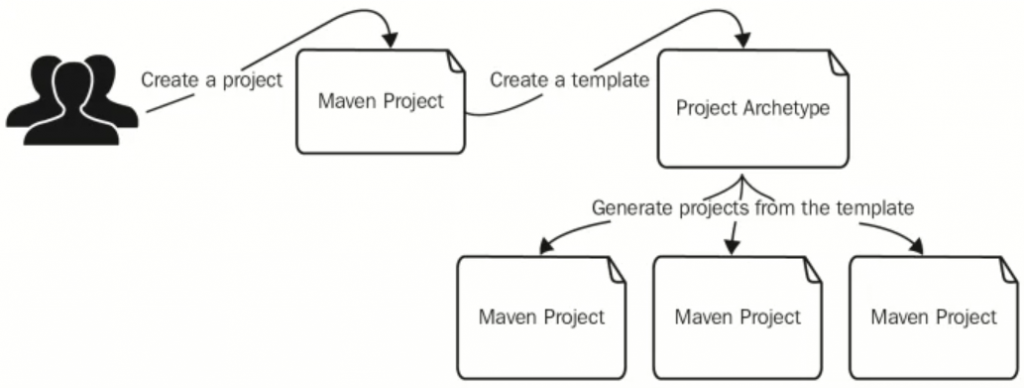What is Archetype?
In short, Archetype is a Maven project templating toolkit. An archetype is defined as an original pattern or model from which all other things of the same kind are made. The name fits as we are trying to provide a system that provides a consistent means of generating Maven projects. Archetype will help authors create Maven project templates for users, and provides users with the means to generate parameterized versions of those project templates.

Using archetypes provides a great way to enable developers quickly in a way consistent with best practices employed by your project or organization. Within the Maven project, we use archetypes to try and get our users up and running as quickly as possible by providing a sample project that demonstrates many of the features of Maven, while introducing new users to the best practices employed by Maven. In a matter of seconds, a new user can have a working Maven project to use as a jumping board for investigating more of the features in Maven. We have also tried to make the Archetype mechanism additive, and by that we mean allowing portions of a project to be captured in an archetype so that pieces or aspects of a project can be added to existing projects. A good example of this is the Maven site archetype. If, for example, you have used the quick start archetype to generate a working project, you can then quickly create a site for that project by using the site archetype within that existing project. You can do anything like this with archetypes.
You may want to standardize J2EE development within your organization, so you may want to provide archetypes for EJBs, or WARs, or for your web services. Once these archetypes are created and deployed in your organization’s repository, they are available for use by all developers within your organization.

Using an Archetype
To create a new project based on an Archetype, you need to call mvn archetype:generate goal, like the following:
$ mvn archetype:generate OR Example $ mvn archetype:generate -DgroupId=com.companyname.softwar -DartifactId=financialService -DarchetypeArtifactId=maven-archetype-quickstart -DinteractiveMode=false
Provided Archetypes
Maven provides several Archetype artifacts:
| Archetype ArtifactIds | Description |
|---|---|
| maven-archetype-archetype | An archetype to generate a sample archetype project. |
| maven-archetype-j2ee-simple | An archetype to generate a simplifed sample J2EE application. |
| maven-archetype-mojo | An archetype to generate a sample a sample Maven plugin. |
| maven-archetype-plugin | An archetype to generate a sample Maven plugin. |
| maven-archetype-plugin-site | An archetype to generate a sample Maven plugin site. |
| maven-archetype-portlet | An archetype to generate a sample JSR-268 Portlet. |
| maven-archetype-quickstart | An archetype to generate a sample Maven project. |
| maven-archetype-simple | An archetype to generate a simple Maven project. |
| maven-archetype-site | An archetype to generate a sample Maven site which demonstrates some of the supported document types like APT, XDoc, and FML and demonstrates how to i18n your site. |
| maven-archetype-site-simple | An archetype to generate a sample Maven site. |
| maven-archetype-webapp | An archetype to generate a sample Maven Webapp project. |
I’m a DevOps/SRE/DevSecOps/Cloud Expert passionate about sharing knowledge and experiences. I am working at Cotocus. I blog tech insights at DevOps School, travel stories at Holiday Landmark, stock market tips at Stocks Mantra, health and fitness guidance at My Medic Plus, product reviews at I reviewed , and SEO strategies at Wizbrand.
Do you want to learn Quantum Computing?
Please find my social handles as below;
Rajesh Kumar Personal Website
Rajesh Kumar at YOUTUBE
Rajesh Kumar at INSTAGRAM
Rajesh Kumar at X
Rajesh Kumar at FACEBOOK
Rajesh Kumar at LINKEDIN
Rajesh Kumar at PINTEREST
Rajesh Kumar at QUORA
Rajesh Kumar at WIZBRAND

